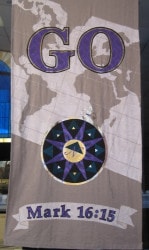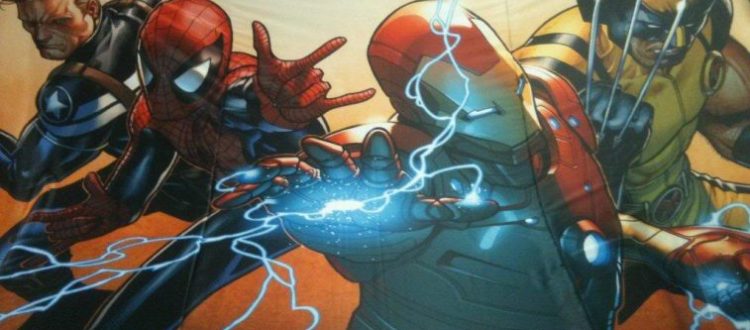There are various kinds of cloth or fabric substrates that are suitable for dye sublimation banner printing. In choosing the right one according to your needs, there are certain factors to consider.
Question: There are a lot of fabric choices when selecting a banner fabric. What factors should I consider?
This is a very good question, and one which we have some very valuable experience in. First off, let me congratulate you for your intelligent choice in selecting fabric banners. For the price, which is about what vinyl banners cost per square foot in the 90’s, these banners make whatever you’re doing look far more polished and professional than any vinyl banner could accomplish.
The Look of the Fabric Banner
 The first factor, in our opinion, is how it looks. Of course, the cloth banners that are available now are almost always dye sublimation printed cloth banners, and if the printer and the ink are high quality (generally the printers are made in S. Korea or Japan, and the inks are from Europe, the US, or Japan), the print itself shouldn’t be an issue.
The first factor, in our opinion, is how it looks. Of course, the cloth banners that are available now are almost always dye sublimation printed cloth banners, and if the printer and the ink are high quality (generally the printers are made in S. Korea or Japan, and the inks are from Europe, the US, or Japan), the print itself shouldn’t be an issue.
Part of the look of any fabric banner will be heavily influenced by the fabric itself. There are satin fabrics that have a sheen to them, which is a very nice look. There are fabrics that are sheer, like a privacy curtain (so named because they really don’t make a room private, but they do make whatever you see kind of hazy). There are mostly opaque materials that are a heavier polyester. These are popular because they don’t wrinkle easily.
The Wrinkle Factor
I am not a big fan of many of the fabrics because of the wrinkle factor. The satins have a real issue with developing “perma-wrinkles” in the shipping process, as a lot of these banners come thousands of miles before being hung up. The sheer materials also can have this issue. The soft polyester, however, rarely has this issue.
The good thing about these polyester or nylon fabrics is that they can be washed and dryed, so it is possible to wash all but the most stubborn wrinkles out. Still, we have a disclaimer for those wanting these materials that we are NOT responsible for wrinkles!
The Lack of Opacity
As touched on earlier, opacity or lack of opacity will be a factor you want to consider. If you need a double-sided banner, typically you’ll have two single sided banners sewn together with a layer of lightweight dark or black fabric between the two sides. This prevents shadowing if there is a bright light or natural light behind the display.
The Stretchability Factor
Another factor is “stretchiness.” If your fabric banner needs to fit onto a frame or display of some sort, you may need a polyester fabric with some lycra in it to give it a bit of stretchability so it will fit tightly on a frame. It is unlikely, in most cases any more, that you’ll find anything other than polyester or nylon fabric being used to cover tradeshow displays.
If you are hanging dye sub cloth banners or posters in a retail environment, a satin or lighter weight polyester knit fabric banner may be just what you need. Fabric posters are becoming increasingly common in upscale department stores and chain specialty clothing stores. Even some of the “big box” home improvement centers have jumped on the bandwagon and ordered some cloth banners for aisle displays.
How about the Cost Factor?
Is cost a factor to consider if you’re leaning toward dye sublimate fabric banners? Not really. Most of the fabrics have similar price per square meter or square foot. The satin is not much different than a knit which is not much different than a sheer, although level of difficulty to print some materials may affect the cost to some degree.
See here for custom printing of and more facts about polyester cloth flags and banner displays.
Popular Posts:




